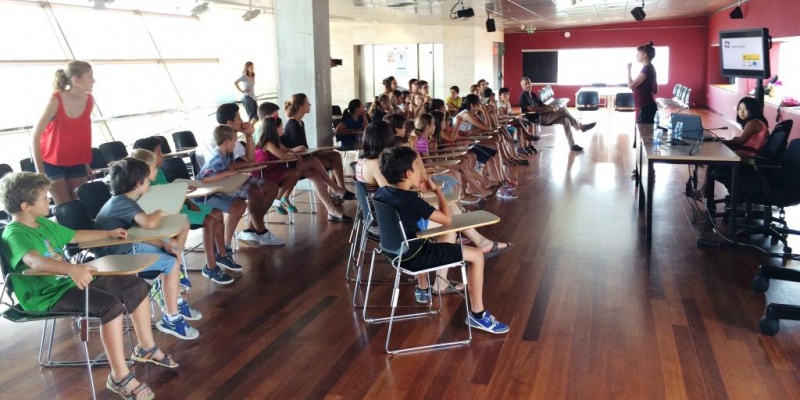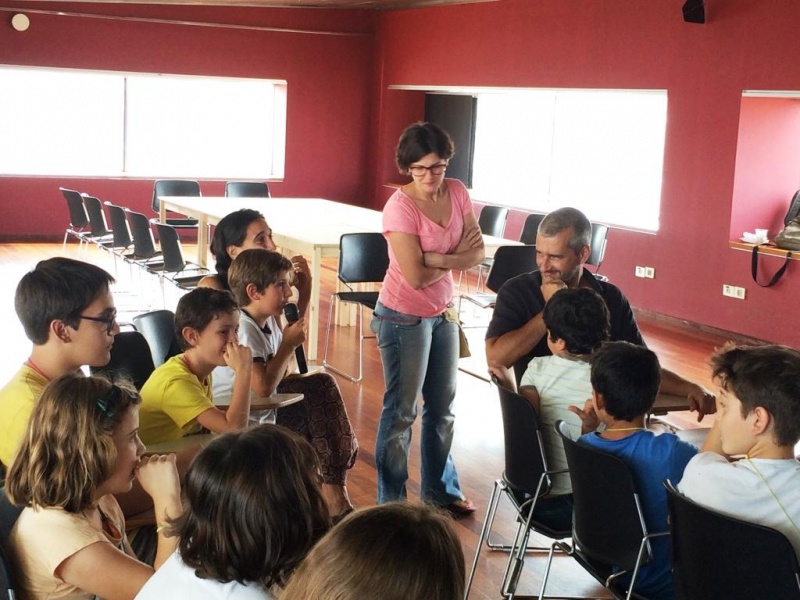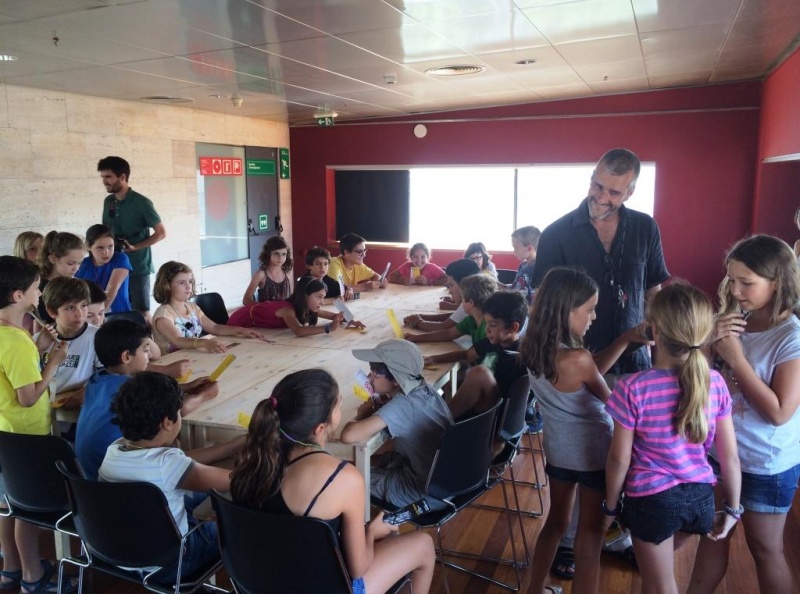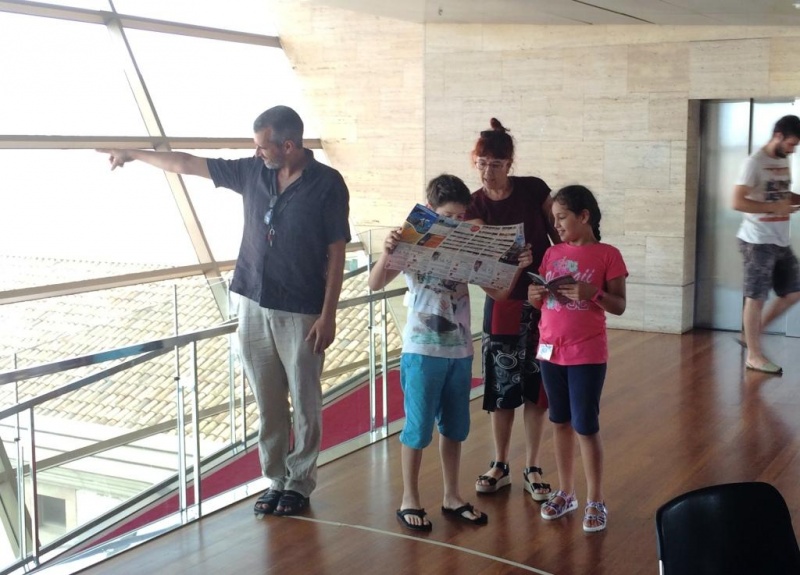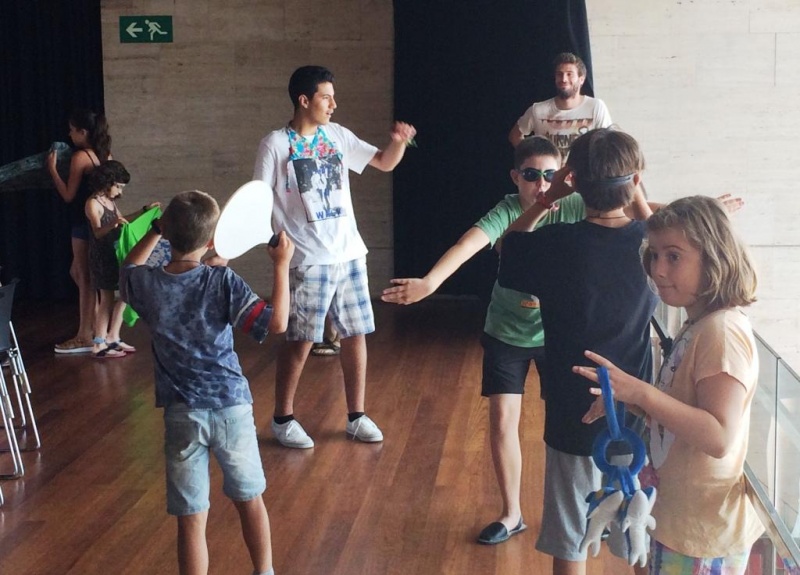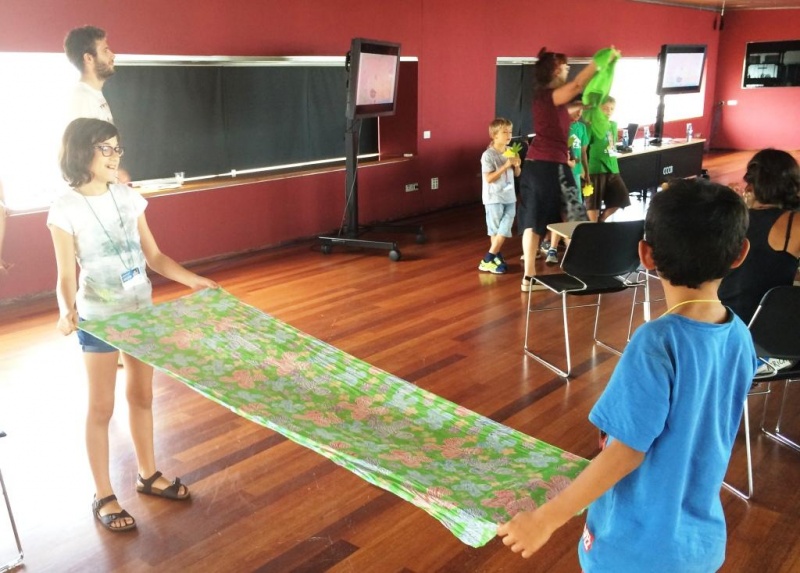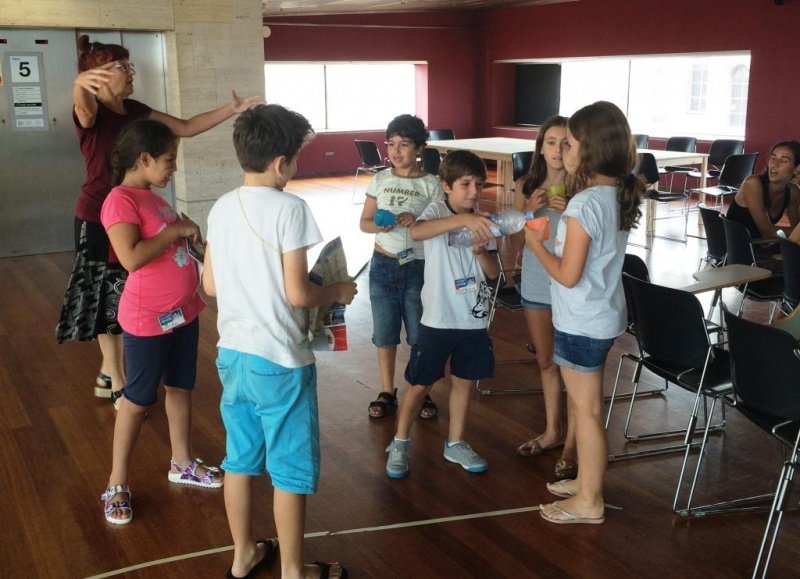In a workshop, which was part of the summer activities programme at the CCCB, publicspace.org worked with children aged between six and fourteen years on how Barcelona’s public space is shaped and how the mechanisms of representation and decision-making function in the city.
Masha Zrncic, coordinator of the European Prize for Urban Public Space, and David Bravo, editor of publicspace.org gave a workshop for children attending the “Culturenauts” summer activities programme. With the children’s very active participation, they talked about the city’s defining features: the fact that many people live together in the same place and in a civilised way; the size of the population as an indicator that distinguishes between a village and a city; and the buildings and spaces between them as defining aspects of different kinds of public spaces. The organisation of the city was also discussed, as well as the different public services, the role of its institutions and its mechanisms of representation.In order to illustrate the tangible spaces and limits of public space in Barcelona, the workshop included a performance in which the children played the roles of different places in Barcelona. They spread out through the Sala del Mirador of the CCCB with different elements identifying them as parts of the city: the Besós and Llobregat rivers and the Collserola Range as limits, the statue of Christopher Columbus, La Rambla, Plaça Catalunya, Montjuïc, the Eixample district and the beaches of Barcelona were the spaces represented by the “Culturenauts” in this enjoyable and educational activity.
Next, the children had to discuss and decide how the city’s money, collected through taxes, would be allocated. Two proposals were put forth: promoting the use of the private car or encouraging the use of buses and, by extension, public transport in general. A considerable majority of the children voted for the latter option, which they considered to be better for the community. They even made further suggestions, for example that cars should only move outside urban centres or even getting rid of cars altogether in favour of the bicycle.
This activity took place in the second week of the “Culturenauts” programme, which deals with the ideal city and public space. On Friday, the children displayed the houses they had constructed during the week to form part of the cities they had been discussing since Monday.
Guillem Pujadas Jané
Translation: Julie Wark.



